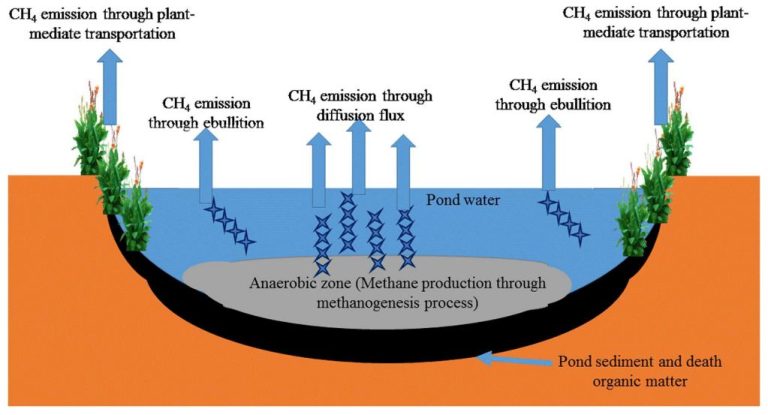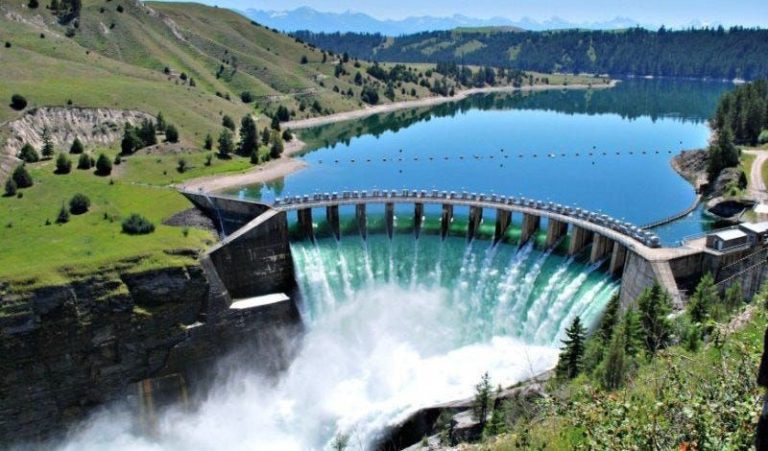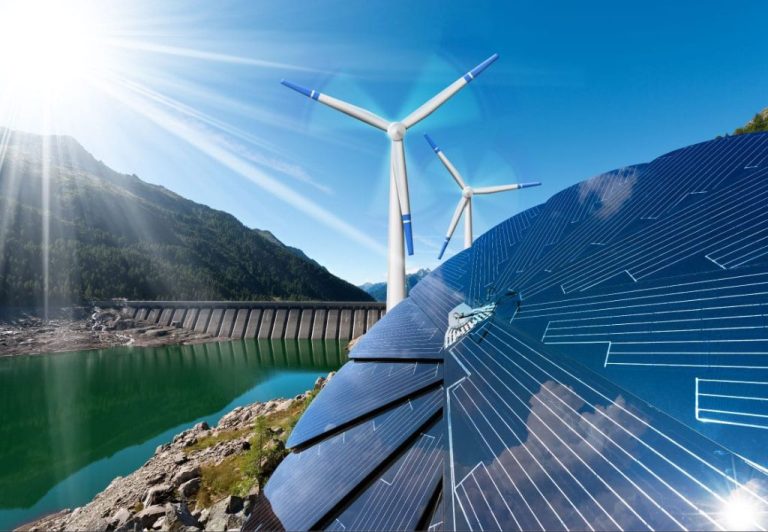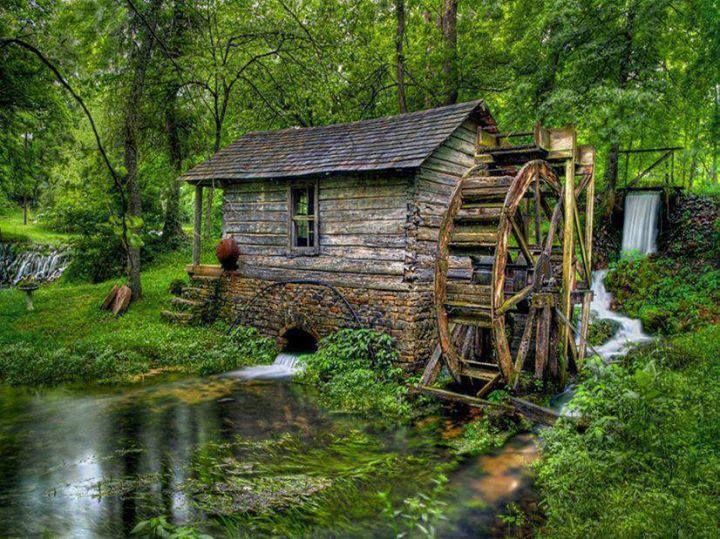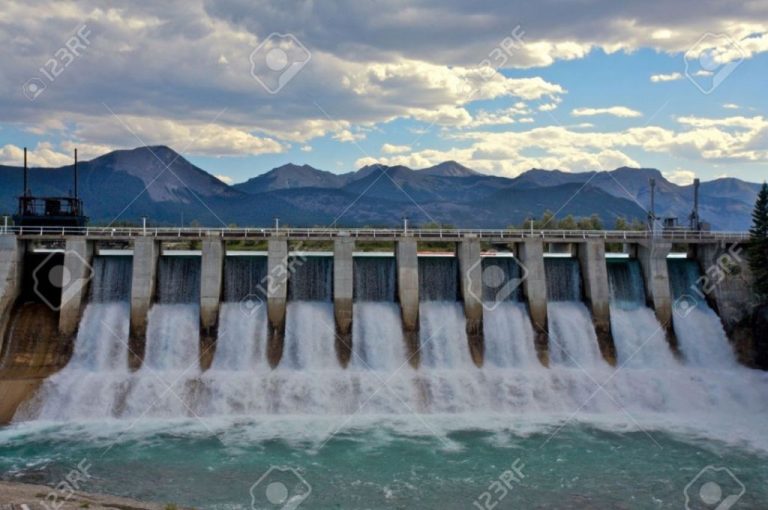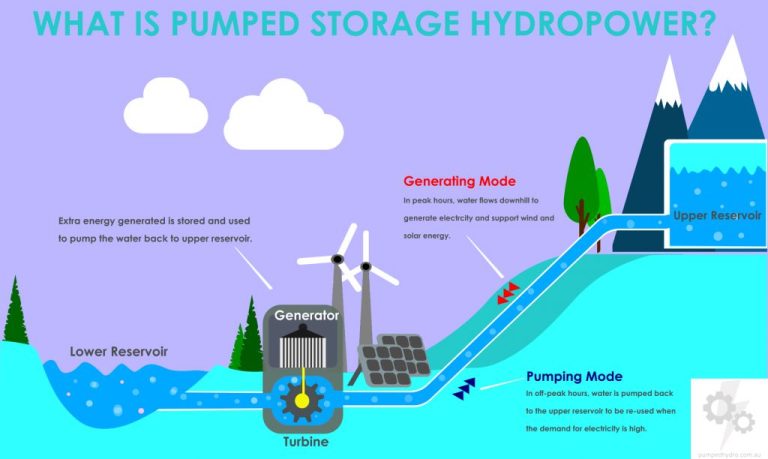Why Is Hydro Energy Conventional?
Hydro energy, also known as hydropower, is the process of using the power of flowing or falling water to generate electricity. It is one of the oldest and most widely used forms of renewable energy. Hydroelectric plants capture the kinetic energy of flowing water by directing it through turbines connected to generators (Fire2Fusion, 2022). This mechanical energy spins the turbines to produce electrical energy that can be distributed via power grids.
Conventional energy sources like coal, oil, natural gas, and nuclear power have traditionally dominated energy production. However, they lead to harmful emissions and waste products. Hydroelectricity provides a cleaner alternative that utilizes the renewable power of water. For these reasons, hydroelectricity is considered a conventional and standard energy generation method, especially for supporting national grids (Felsics, 2023).
History of Hydropower
The use of hydropower stretches back thousands of years, with evidence of water wheels being used in ancient Greece, Rome and China to grind grains and perform other basic tasks. The first known use of hydropower to generate electricity was in the late 1800s in the United States and Europe. One of the first hydropower plants opened on the Fox River in Wisconsin in 1882.
According to the Northwest Power and Conservation Council, dams have played an important role in the development of the Columbia River Basin, providing navigation, irrigation and flood control. The first dams on the Columbia River were primarily built for navigation purposes in the early 1900s, including Rock Island Dam completed in 1933. It wasn’t until the 1930s that dams began being built primarily for hydropower generation. Some of the most iconic dams were built between 1933-1975, including Grand Coulee Dam which opened in 1941 and was the largest hydropower producer in the United States for many decades. Other major Columbia River dams built during this era include Bonneville, McNary, John Day, and Priest Rapids.
Early hydropower projects focused on “low-head” facilities, using small dams and water falls to generate modest amounts of power. But as electricity demand grew in the early 20th century, larger “high-head” facilities were built to harness more energy by building bigger dams and running water through turbines from a greater height. Many iconic dams like Hoover and Grand Coulee emerged during this era and helped energize major infrastructure projects.
Sources: https://www.nwcouncil.org/reports/columbia-river-history/damshistory/, https://www.mdpi.com/2073-4441/13/3/265
Hydropower Generation Methods
There are three main types of hydropower facilities based on the method of generation: dam/reservoir systems, run-of-river systems, and pumped storage systems [1]. Each system takes advantage of the kinetic energy in flowing water to generate electricity, but in slightly different ways.
Dam and reservoir systems are the most common. They involve constructing a dam across a river to create a reservoir. Water from the reservoir flows through the dam and turns turbines connected to generators to produce electricity. The height of the dam and volume of water determine the amount of electricity that can be generated [2].
Run-of-river systems generate power from the natural flow of rivers without the need for dams or reservoirs. Small dams divert some of the river water through a canal and into turbines before returning it to the main river downstream. They have less environmental impact but also generate less power.
Pumped storage facilities pump water uphill into a reservoir when electricity demand is low to store energy. During periods of high electricity use, the water is released back downhill through turbines to generate power. This allows energy from intermittent sources like wind and solar to be stored.
Advantages of Hydropower
Hydropower is considered a renewable energy source because it relies on the water cycle, which is continuously renewed by the sun’s heat. Rain and snow provide a continuous supply of water. As long as rainfall and snowmelt continue, hydropower is a renewable resource (Benefits of Hydropower – Energy.gov).
Hydropower is also a very reliable source of energy. The power generated can be quickly adjusted to meet momentary changes in demand, allowing hydropower to balance and firm variable renewable resources like wind and solar. Hydropower can start up quickly to meet sudden increases in demand when other power plants are unavailable (All the benefits of hydropower – Enel Green Power).
Lastly, after facilities are constructed, hydropower is generally inexpensive to operate and maintain. The fuel itself is free and renewable, so operational costs are mainly for upkeep of the facility. Hydropower is one of the lowest-cost renewable energy technologies available today (Benefits of Hydropower – Energy.gov).
Scale and Adoption of Hydropower
Hydropower is one of the largest and most widely adopted forms of renewable energy globally. According to the International Hydropower Association (IHA), hydropower accounted for over 16% of total global electricity generation in 2021, supplying over 4,400 terawatt-hours (TWh) of clean renewable electricity.[1]
The installed hydropower capacity worldwide has seen steady growth over the past decade. In 2021, the global installed capacity stood at 1,308 gigawatts (GW), representing an increase of over 20% from 2011 levels. The top countries by installed hydropower capacity include China, Brazil, Canada, the United States and Russia. Developing countries in Asia, Africa and Latin America are expected to drive most of the growth in hydropower in the coming years.[1]
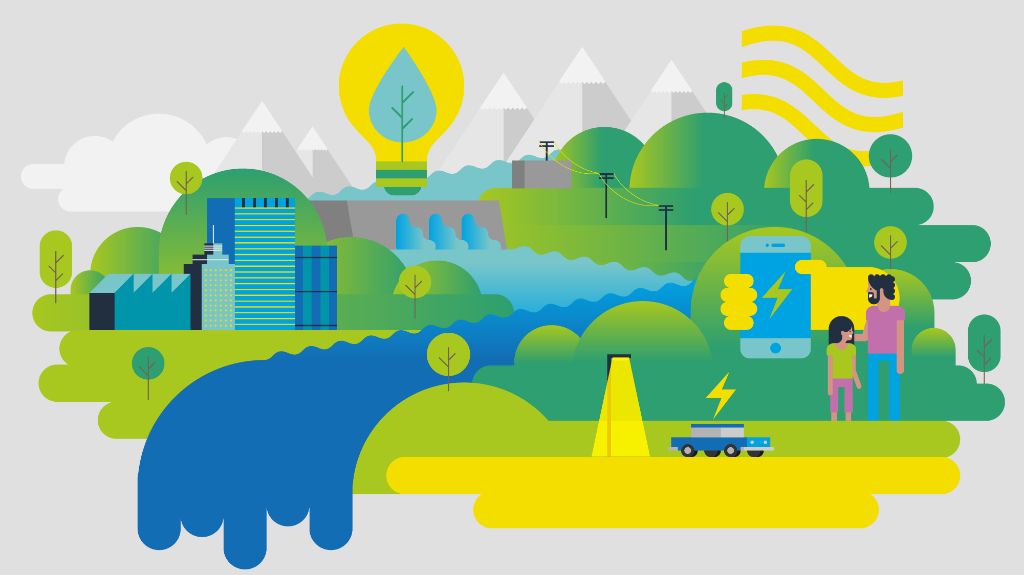
Overall, hydropower remains one of the most widely used renewable energy sources globally, supplying clean and reliable electricity to millions around the world. With continued technology improvements and new project development, hydropower’s growth is expected to continue in the years ahead.
Integration with the Grid
Hydropower plays a vital role in integrating renewable energy into the electric grid. The ability of hydropower stations to generate and store large amounts of electricity makes them uniquely suited to balance variable renewable resources like wind and solar. Hydropower can rapidly go from zero power to maximum output, making it an extremely flexible grid resource.
Hydropower provides essential base load power that is available around the clock. The consistent and reliable power output from hydropower facilities allows grid operators to integrate more intermittent renewable generation into the system. Hydropower essentially acts as a battery, using excess electricity from other sources to pump water uphill into reservoirs. When energy is needed, hydropower generators use the stored potential energy of the water flowing downhill to quickly ramp up electricity production.
In addition, hydropower helps stabilize the grid by providing voltage and frequency regulation services. The spinning turbines and generators allow precise control over reactive power to maintain stable voltage levels. Hydropower can also rapidly adjust its real power output to correct frequency deviations and match supply with demand. These grid stabilization services are critical for smooth operation of the transmission system.
Overall, the flexible generation and storage capabilities of hydropower make it an indispensable asset for integrating large shares of variable renewable resources onto the electric grid.
Environmental Considerations
While hydropower is considered a renewable energy source, large hydropower dams can have significant impacts on the local environment and wildlife (Null et al., 2021 https://par.nsf.gov/servlets/purl/10288963). Damming rivers for hydropower floods large areas of land that serve as habitat for terrestrial species. This can disrupt migration routes and lead to habitat fragmentation for wildlife populations. The reservoirs created by dams also change river conditions, which impacts the fish and aquatic species living in the river (Soukhaphon, 2021 https://www.mdpi.com/2073-4441/13/3/265).
While hydropower itself does not produce emissions, the reservoirs created by dams emit greenhouse gases like methane and carbon dioxide. The flooding of vegetation and organic material underwater contributes to the production and release of these gases (Siddiqi & Wescoat Jr, 2013). However, the emissions from hydropower reservoirs are generally much lower compared to fossil fuel power plants.
Hydropower vs. Other Renewables
Hydropower is commonly compared to other renewable energy sources like solar, wind, and tidal power in terms of costs, reliability, and adoption. Hydropower has a lower net energy cost per megawatt compared to solar and wind, with estimates around $141,991 for hydro, $50,938 for solar, and $74,412 for wind according to one analysis [1]. However, the costs can vary greatly depending on the site and project specifics.
In terms of reliability, hydropower’s main advantage is its ability to dispatch power on demand, whereas solar and wind are more intermittent and weather-dependent. Hydropower can complement solar and wind’s variability by providing grid balancing services. During storms, wind and small hydro often perform well, while solar works best on sunny days [2].
Globally, hydropower has seen much wider adoption and accounts for around 71% of renewable electricity generation. However, growth in deployments of solar and wind have outpaced hydro in recent years. In the U.S., solar and wind capacity additions have exceeded hydro since 2015 [3].
Future Outlook
Hydropower is expected to continue growing as countries seek to expand renewable energy and meet climate goals. Projections estimate hydropower capacity could grow over 45% by 2040, adding 530-640 GW globally (1). The International Energy Agency predicts the fastest growth in Africa, Asia and Latin America as countries tap into their large remaining potential. In the U.S., projects to add over 26 GW of new hydropower are under development (2).
However, growth faces challenges like environmental concerns, high upfront costs, and competing demands for water resources. Impacts on ecosystems and communities will need to be carefully managed. Innovation in low-impact designs like hydrokinetic turbines, smaller scale/low-head projects, and pumped storage offer paths for sustainable growth. Overall, hydropower is poised to remain the leading renewable energy source globally.
(1) https://www.power-technology.com/features/hydropower-energy-future/
(2) https://www.tandfonline.com/doi/abs/10.1080/15567240500402859
Conclusion
In summary, hydropower is considered a conventional energy source for several reasons. Hydroelectric dams and power plants have been used to generate electricity for over a century, providing a stable and proven technology that accounts for the majority of renewable energy produced globally. With large-scale hydro projects, hydropower can generate reliable baseload power and easily integrate into existing transmission grids. While not without some environmental impacts, the technology is considered clean energy as it produces minimal emissions. Compared to other renewables like wind and solar, hydropower can offer more consistent and controllable generation. Looking ahead, conventional hydropower will continue playing an important role in the renewable energy mix, providing stable and flexible power generation capabilities.

